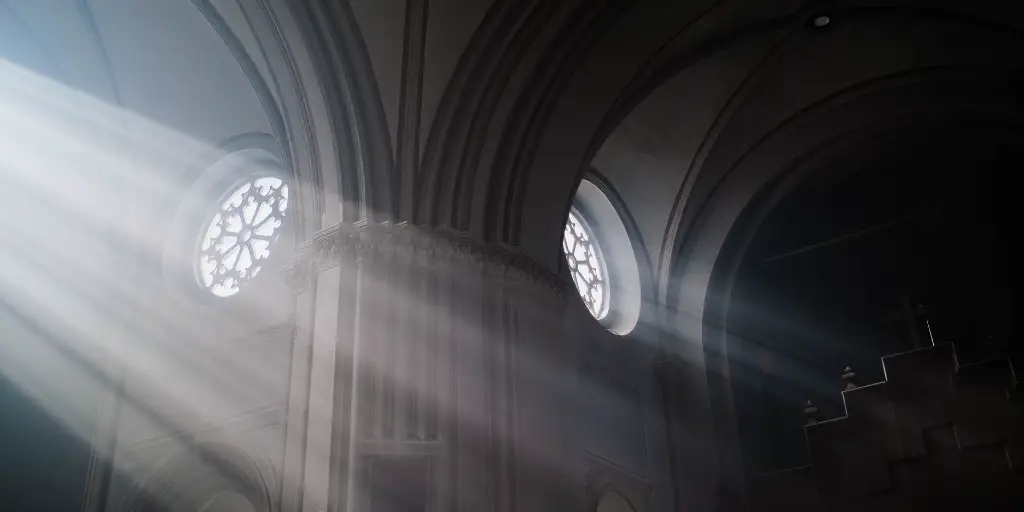Christian church architecture is a testament to the enduring beauty and spiritual significance of sacred buildings. Church buildings play a vital role in religious practices, providing a space for worship, reflection, and community. Throughout history, church architecture has evolved, with different styles emerging across different regions and time periods.
The beauty of Christian church architecture is not only found in its aesthetic appeal but also in the way it enhances spiritual experiences. Church buildings are designed to embody the sacred, elevating the senses and creating a sense of awe and reverence. From the intricate stained glass windows to the soaring arches, every detail is carefully crafted to enhance the worship experience.
While the primary purpose of Christian church architecture is to facilitate religious practices, these buildings also hold significant historical and cultural value. Many historic churches around the world serve as testaments to faith and artistry, with unique stories and architectural significance. As society continues to evolve, the challenge remains to balance traditional architectural elements with modern innovations while maintaining historical integrity.
Key Takeaways:
- Christian church architecture plays a vital role in religious practices, providing a space for worship, reflection, and community.
- The beauty of Christian church architecture enhances spiritual experiences, embodying the sacred to create a sense of awe and reverence.
- Many historic churches around the world serve as testaments to faith and artistry, with unique stories and architectural significance.
- The challenge remains to balance traditional architectural elements with modern innovations while maintaining historical integrity.
The Influence of Gothic and Medieval Architecture
Christian church architecture has been shaped by numerous styles and movements throughout history, including Gothic and Medieval architecture. The distinct features and characteristics of these styles have left an indelible mark on religious architecture, influencing the design of countless churches around the world.
The Importance of Gothic Architecture
Gothic architecture emerged in the late Middle Ages in France, characterized by pointed arches, ribbed vaults, and flying buttresses. Its emphasis on verticality and light aimed to create a sense of divine transcendence that was meant to inspire awe in churchgoers. Many notable Gothic churches were built during this period, including Notre-Dame de Paris and Chartres Cathedral in France and Canterbury Cathedral in England.
The symbolism of Gothic architecture is also significant, with intricate carvings and stained-glass windows depicting scenes from the Bible and Christian history. These features were meant to educate and inspire the largely illiterate population of the time, helping to spread the message of Christianity through art and architecture.
The Significance of Medieval Church Architecture
Medieval church architecture can be characterized by its use of rounded arches, heavy walls, and dark interiors. Despite its stark appearance, Medieval church architecture was highly symbolic, with every detail carefully chosen to convey theological concepts. For example, the use of a cruciform floor plan, with the building forming the shape of a cross, was meant to represent the crucifixion of Jesus Christ.
Many of the most famous churches in the world were built during the Medieval period, including St. Peter’s Basilica in Rome and Westminster Abbey in London. These buildings remain powerful symbols of faith and artistry, testaments to the enduring importance of Christian church architecture.
“Gothic architecture aimed to create a sense of divine transcendence that was meant to inspire awe in churchgoers.”
The influence of Gothic and Medieval church architecture can still be seen in the design of modern churches, which often incorporate elements of these styles into their construction. Whether it’s the soaring spires of a Gothic cathedral or the austere simplicity of a Medieval parish church, Christian church architecture continues to inspire awe and reverence in people around the world.
Next, we will explore the significance of historical churches in Christian architecture.
Historical Churches: Testaments to Faith and Artistry
In Christian architecture, historical churches hold a particular significance. They serve as physical reminders of the enduring human aspiration to connect with the divine.
One such example is the Sainte-Chapelle in Paris, France. Constructed in the Gothic style between 1243 and 1248, the chapel is renowned for its striking stained-glass windows depicting stories from the Bible. The chapel’s beauty and intricate design aim to evoke a sense of awe in worshippers and visitors.
Another notable example of historical Christian architecture is the Hagia Sophia in Istanbul, Turkey. Originally constructed as a church in 537 AD, it was later converted into a mosque before being repurposed as a museum in 1935. The building’s blend of Byzantine and Ottoman architectural elements is a testament to its rich and diverse history.
The preservation of historical churches is a priority for many organizations and individuals. Efforts are made to restore and maintain these buildings, not only for their architectural importance but also as a means of safeguarding cultural heritage and promoting tourism.
Historical churches are not only vital to the practice of religion, but they also serve as works of art and cultural treasures. They are a testament to the enduring human desire to create and connect with the divine.
Church Construction and Renovation: Balancing Tradition and Innovation
Constructing or renovating a church is a delicate task that requires careful consideration of both tradition and innovation. Architects and designers must balance the need to maintain historical integrity with the desire to incorporate contemporary elements.
One of the biggest challenges in church construction and renovation is preserving the building’s original character while ensuring it meets modern day standards. This often means incorporating new technology and materials without detracting from the building’s historical significance.
| Tradition | Innovation |
|---|---|
| When it comes to tradition, it’s important to preserve the architectural style and features of the original building. This can involve restoring damaged or decayed architectural elements, or researching and replicating elements that have been lost over time. Often, traditional materials and construction methods are preferred to maintain the authenticity of the building. For example, a church may be built using traditional stone masonry, wooden beams, and stained glass windows. | Innovation in church construction and renovation involves incorporating new materials and technologies while still maintaining the building’s historical integrity. This can involve the use of sustainable building materials, such as recycled materials or energy-efficient technology. Innovative designs can also be incorporated to enhance the building’s functionality, such as improved acoustics for music or audio visual systems for sermons. |
Sustainable design practices are becoming increasingly important in church construction and renovation. Many churches are incorporating renewable energy sources such as solar panels and wind turbines to reduce their carbon footprint. Additionally, new insulation materials and efficient HVAC systems can help reduce energy usage and costs.
Ultimately, balancing tradition and innovation in church construction and renovation requires a deep understanding and reverence for the building’s history and significance. With careful planning and execution, architects and designers can create modern, sustainable, and functional church buildings that honor the past while looking towards the future.
Conclusion
Christian church architecture is a testament to the enduring beauty and spirituality of sacred buildings. From the Gothic and Medieval styles to historical churches, each building tells a unique story and inspires awe and reverence in those who enter.
As architects and designers continue to construct and renovate churches, they face the challenge of balancing traditional elements with modern innovations. This requires careful consideration of the building’s historical integrity and incorporating sustainable design practices.
Despite the evolving trends in church design, the enduring beauty and spiritual significance of Christian church architecture will continue to inspire faith and artistry for generations to come.
FAQ
Q: What is Christian church architecture?
A: Christian church architecture refers to the design and construction of buildings specifically intended for Christian worship and religious practices. It encompasses various styles and features that are unique to Christian churches.
Q: Why is the beauty and spirituality of church architecture important?
A: The beauty and spirituality of church architecture play a significant role in creating a sacred space that enhances the religious experience. They help evoke a sense of awe, reverence, and transcendence, allowing worshipers to connect with their faith on a deeper level.
Q: How has church architecture evolved over time?
A: Church architecture has evolved throughout history, reflecting the cultural, social, and artistic trends of different periods. From the simplicity of early Christian basilicas to the elaborate Gothic details and the modern innovations of contemporary designs, church architecture has continually adapted to the changing needs and styles of worship communities.
Q: What are the distinctive features of Gothic and Medieval church architecture?
A: Gothic and Medieval church architecture is characterized by pointed arches, ribbed vaults, flying buttresses, and stained glass windows. These features were used to create soaring vertical spaces that aimed to inspire a sense of heavenly transcendence. Symbolism, such as decorative carvings and intricate sculptures, was also heavily featured in Medieval church architecture.
Q: What are some notable examples of historical churches?
A: There are numerous historical churches around the world that hold architectural and historical significance. Some notable examples include the Notre-Dame Cathedral in Paris, St. Peter’s Basilica in Vatican City, and the Hagia Sophia in Istanbul. These churches showcase the rich heritage and artistry of Christian architecture.
Q: How do architects balance tradition and innovation in church construction and renovation?
A: Balancing tradition and innovation in church construction and renovation requires careful consideration of the building’s historical context and purpose. Architects aim to preserve the historical integrity of the church while incorporating modern elements that enhance functionality and sustainability. This may involve using traditional materials and techniques alongside contemporary design features.
Q: What are some sustainable design practices in church construction and renovation?
A: Sustainable design practices in church construction and renovation include incorporating energy-efficient lighting, heating, and cooling systems, using renewable materials, and integrating green spaces and natural ventilation. These practices help minimize the environmental impact of churches while creating a more sustainable and eco-friendly worship space.
Q: How does Christian church architecture inspire awe and reverence?
A: Christian church architecture inspires awe and reverence through its grandeur, intricate details, and sacred atmosphere. The use of beautiful stained glass windows, ornate decorations, and sweeping architectural forms creates a space that encourages contemplation, reflection, and a sense of connection to the divine.





